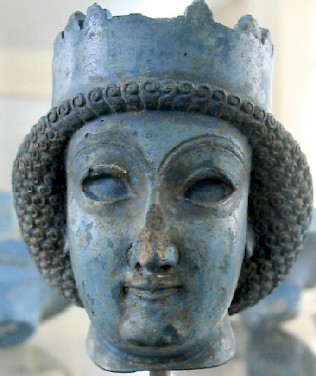Atossa
Atossa (Elamite Udusana) was the daughter of the Persian king Cyrus the Great (559-530 BCE) and the first wife of king Darius I the Great (522-486).

Cyrus was succeeded by his son Cambyses (530-522). According to the Greek researcher Herodotus of Halicarnassus, he fell in love with one of his sisters, Atossa. This suggests that Atossa was born before 545 BCE, because in Antiquity, girls usually married after they were about fifteen years old.
Later, Atossa had to marry the Magian usurper Smerdis, who had seized power in March 522. In September 522, Darius, a member of the younger branch of the royal family, the Achaemenids, staged a countercoup and became king. To improve his claim to the throne, Darius married to Atossa, her sister Artystone, and her niece Parmys. There may have been another important element: the name Atossa is Zoroastrian, and it may be that Atossa belonged to a family that was connected to an important Persian faith.
Darius and Atossa had four sons:
- Xerxes was born in c.520 BCE. In 486, he became king of the Achaemenid empire and died in 465.
- Masistes was their second son. Probably, Masistes was a title (mathišta: "the greatest one"), and there are indications that his real name was Ariamenes. He was one of the commanders of the Persian army during Xerxes' campaign against the Greeks and was killed after a dynastic quarrel after 479.
- Achaemenes became the Persian satrap of Egypt, probably in 485. He commanded a part of the Persian navy during Xerxes' campaign against the Greeks. In 459, he was killed by Egyptian rebels.
- Hystaspes became satrap of Bactria, one of the most important parts of the Achaemenid empire.
Herodotus tells us that Atossa had Greek slaves and servants. He mentions the physician Democedes of Croton as one of her favorites. This Greek organized a reconnaissance expedition to the west, c.519.
Atossa's Elamite name was Udusana, which may be a rendering of Old Persian *Utautha. It is absent from the tablets found at Persepolis, which suggests that she died before 515, the year in which the oldest tablets were written. (Her absence cannot be coincidental; there are too many tablets.) Herodotus' statement that she helped Xerxes become king is therefore unlikely to be true. The same applies to Aeschylus' play The Persians, in which we see queen Atossa as a widow.